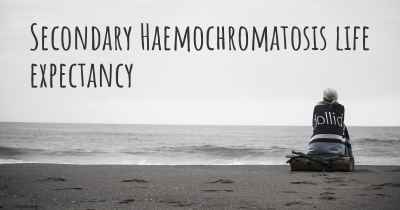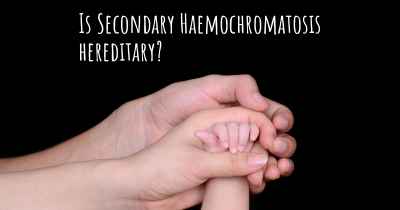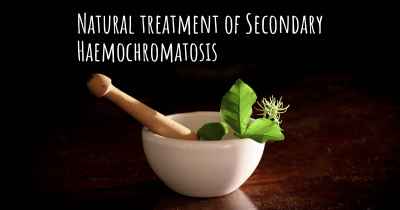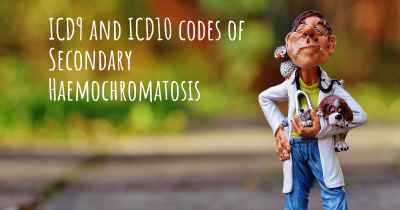Secondary Haemochromatosis diet. Is there a diet which improves the quality of life of people with Secondary Haemochromatosis?
Are you aware of a diet that can improve the quality of life of people with Secondary Haemochromatosis? Is there a diet that is suggested to avoid when having Secondary Haemochromatosis? See if there is a diet that can improve the quality of life of people with Secondary Haemochromatosis, recommended and to avoid food when having Secondary Haemochromatosis
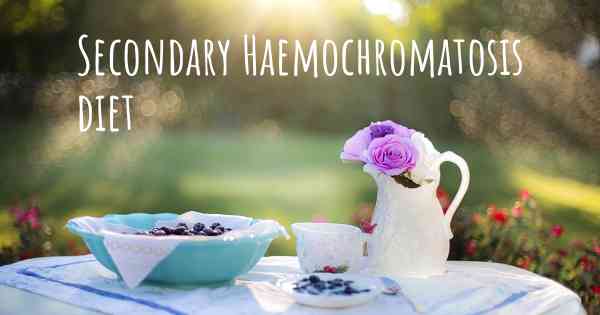
Improving Quality of Life with a Diet for Secondary Haemochromatosis
Secondary Haemochromatosis is a condition characterized by excessive iron accumulation in the body due to other underlying health issues such as chronic liver disease, blood disorders, or repeated blood transfusions. While the primary treatment for this condition is addressing the underlying cause, adopting a suitable diet can significantly improve the quality of life for individuals with Secondary Haemochromatosis.
The Importance of Diet in Secondary Haemochromatosis
Iron overload resulting from Secondary Haemochromatosis can lead to various complications, including liver damage, heart problems, and joint pain. A well-planned diet can help manage iron levels and minimize the risk of these complications, promoting overall health and well-being.
Key Dietary Recommendations
While there is no one-size-fits-all diet for Secondary Haemochromatosis, certain dietary modifications can be beneficial. It is crucial to consult with a healthcare professional or a registered dietitian to tailor the diet to individual needs. However, here are some general recommendations:
- Limit Iron Intake: Since excess iron is the primary concern, it is essential to avoid foods high in iron. This includes red meat, organ meats (liver, kidney), shellfish, and iron-fortified foods. Additionally, avoid cooking in iron cookware and consuming vitamin C-rich foods, as vitamin C enhances iron absorption.
- Avoid Alcohol: Alcohol consumption can worsen liver damage associated with Secondary Haemochromatosis. It is advisable to eliminate or significantly reduce alcohol intake.
- Choose Low-Iron Foods: Opt for foods that are naturally low in iron. This includes most fruits, vegetables, whole grains, and legumes. However, it is important to note that some plant-based foods, such as spinach and tofu, contain non-heme iron, which is less readily absorbed by the body compared to heme iron found in animal products.
- Consume Calcium-Rich Foods: Calcium can inhibit iron absorption. Incorporate calcium-rich foods like dairy products, fortified plant-based milks, leafy greens, and calcium-set tofu into your diet.
- Drink Tea and Coffee: Certain compounds present in tea and coffee, such as tannins and polyphenols, can inhibit iron absorption. Enjoying these beverages between meals can help reduce iron absorption.
- Stay Hydrated: Drinking an adequate amount of water is important for overall health and can help support proper kidney function, which is crucial for iron excretion.
Additional Considerations
While dietary modifications play a significant role in managing Secondary Haemochromatosis, it is important to consider other aspects of a healthy lifestyle:
- Regular Exercise: Engaging in physical activity can help maintain a healthy weight, improve cardiovascular health, and support overall well-being.
- Regular Monitoring: Regularly monitoring iron levels through blood tests is essential to ensure the effectiveness of dietary changes and overall management of Secondary Haemochromatosis.
- Supplement with Caution: Avoid taking iron supplements or multivitamins containing iron unless specifically recommended by a healthcare professional.
- Medication Management: If medications are prescribed to manage the underlying condition causing Secondary Haemochromatosis, it is important to follow the prescribed regimen and consult with a healthcare professional regarding any potential interactions with dietary changes.
Remember, each individual's dietary needs may vary, so it is crucial to work closely with a healthcare professional or a registered dietitian to develop a personalized diet plan that suits your specific requirements.
